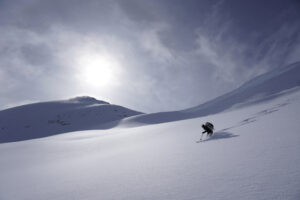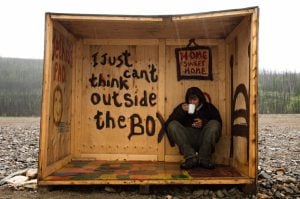
Exploration
The pull of Everest
A century after a Canadian was instrumental in charting the world's highest peak, a fellow Canadian reflects on the magnetism of Everest
- 4083 words
- 17 minutes
This article is over 5 years old and may contain outdated information.
Exploration

Mountaineer Len Vanderstar and his CanaTREK Summits of Canada team just became the first Canadian group to climb each of Canada’s 13 provincial and territorial high-points after reaching the summit of Barbeau Peak in Nunavut yesterday.
The Summits of Canada Expedition was first started by founder James Coleridge, RCGS Fellow, in 2003. Vanderstar himself has been with the Summits of Canada Expedition for 11 years, and his summit of Barbeau Peak marks a monumental achievement in Canadian mountaineering.
For expedition co-ordinator Vanderstar, however, the voyage was never about being first.
“This journey has always been about Canadian and self-discovery, sharing the country’s diverse geography with students and promoting health and fitness through adventure activities,” said Vanderstar in a press release announcing the team’s accomplishment.
While team composition has changed for every climb, Vanderstar has climbed all 13 peaks. Below is a list of the summits he has reached over the past 11 years:
Mount Columbia, Alta.: 3,747 metres (12,293 feet)
A first attempt to climb Alberta’s highest peak in June 2006 was unsuccessful, but that did not stop the team from regrouping and successfully summiting this prominent mountain in the Canadian Rockies.
Ishpatina Ridge, Ont.: 693 metres (2,274 feet)
Ishpatina is an Ojibwa term which means “high hill.” The ridge is located near Sudbury.
Baldy Mountain, Man.: 832 metres (2,730 feet)
This provincial high point is located on the Manitoba Escarpment, which spans the international border and marks the boundary of an ancient glacial lake that once covered an area larger than all the Great Lakes combined.
Mount Logan, Y.T.: 5,959 metres (19,551 feet)
Vanderstar and climbing partner James Coleridge’s summit attempt was almost thwarted by bad weather; the pair spent five days hunkered down in an ice cave while hurricane-force winds raged outside.
Fairweather Mountain, B.C.: 4,663 metres (15,299 feet)
This mountain was named in 1778 by Captain James Cook, apparently after the good weather Cook experienced when he first encountered it. It is located at the southern end of the St. Elias mountain range.
Cypress Hills, Saskatchewan: 1,392 metres (4,567 feet)
The Cypress Hills span the southern border between Saskatchewan and Alberta. The highest point on the plateau is actually found in Alberta, but the hills also mark the highest point of a province better known for its expanse of flat prairie.
Mount Carleton, N.B.: 820 metres (2,680 feet)
Part of the Appalachian mountain chain that spans the entire east coast of the continental United States and Canada, Mount Carleton is also the highest point in the Canadian Maritimes.
Glen Valley, P.E.I.: 142 metres (466 feet)
Glen Valley was the lowest of the high points the team achieved. It is located in Queens County.
White Hill, N.S.: 532 metres (1,745 feet)
Located in Cape Breton Highlands National Park and accessible only by hiking, White Hill is known for its spectacular views of mountains and ocean.
Mount Caubvick, N.L./Mont D’Iberville, Que.: 1,652 metres (5,420 feet)
Found in the majestic and isolated Torngat Mountains, this peak actually straddles the border between Quebec and Labrador and is known by two different names. The mountain range itself derives its name from an Inuit word, Torngarsuak, which means “ruler of all sea animals.”
Mount Nirvana, N.W.T.: 2,773 metres (9,098 feet)
As of 2008, the highest prominence in the Northwest Territories actually does not have an official name. It was first climbed in 1965 by Bill Buckingham, who gave it the name Nirvana, though an earlier visitor to the area, John Milton, called the peak Nahanni.
Barbeau Peak, Nu.: 2,616 metres (8,583 feet)
Found at the top of the world in the Canadian High Arctic, half the challenge of summiting this remote mountain lies in just getting to it: situated on Ellesmere Island in Quttinirpaaq National Park, it’s surrounded by polar desert.
Are you passionate about Canadian geography?
You can support Canadian Geographic in 3 ways:

Exploration
A century after a Canadian was instrumental in charting the world's highest peak, a fellow Canadian reflects on the magnetism of Everest

Exploration
A behind-the-scenes look at the adventures and discoveries of the passionate explorers funded by the Royal Canadian Geographical Society

Travel
An insider’s account of the modern-day gold rush

Exploration
Ken Hedges of the 1968-69 British Trans Arctic Expedition reflects on the perilous and ground-breaking journey